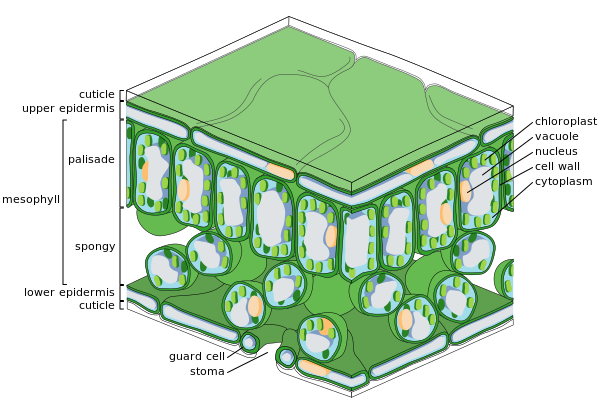The Light Independent Reaction
1.Carbon Fixation
The cycle incorporates each CO2 molecules by attaching it to a five-carbon sugar RuBP (Ribulose Bisphosphate). The enzyme that catalyzes this step is called rubisco (RuBP carboxylase). The product of phase 1 is a 6 carbon sugar so unstable that it splits in half forming two molecules of 3-phosphoglycerate.
2. Reduction
Each moleculeof3-phosphoglycerate
receives an additional phosphate group from ATP, becoming 1,3·bisphosphoglycerate. Next, a pair of electrons donated from NADPH reduces 1,3-bisphosphoglycerate, which also loses a phosphate group, becoming G3P. Specifically, the electrons from NADPH reduce a carboxyl group on 1,3-bisphosphoglycerate to the aldehyde group of G3P, which stores more potential energy. G3P is a sugar-the same three-carbon sugar formed in glycolysis by the splitting of glucose Notice that for every three molecules of CO2 that enter the cycle, there are six molecules ofG3P formed. But only one molecule of this three-carbon sugar can be counted as a net gain of carbohydrate. The cycle began with 15 carbons' worth of carbohydrate in the form of three molecules of the five-carbon sugar RuBP. Now there are 18 carbons' worth of carbohydrate in the form of six molecules of G3P. One molecule exits the cycle to be used by the plant cell, but the other five molecules must be recycled to regenerate the three molecules of RuBP.
3. Regeneration
In a complex series of reactions. the carbon skeletons of five molecules of G3P are rearranged by the last steps of the Calvin cycle into three molecules of RuBP. To accomplish this, the cycle spends three more molecules of ATP. The RuBP is now prepared to receive CO2 again, and the cycle
continues. For the net synthesis of one G3P molecule, the Calvin cycle consumes a total of nine molecules of ATP and six molecules of NADPH. The light reactions regenerate the ATP and NADPH. The G3P spun off from the Calvin cycle becomes the starting material for metabolic pathways that synthesize other organic compounds, including glucose and other carbohydrates. Neither the light reactions nor the Calvin cycle alone can make sugar from CO2, Photosynthesis is an emergent property of the intact chloroplast, which integrates the two stages of photosynthesis.











